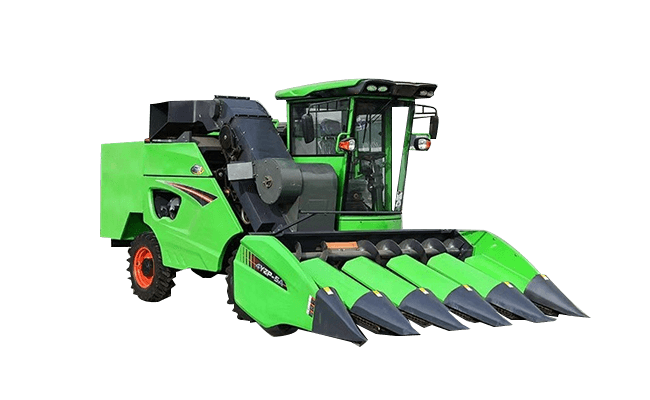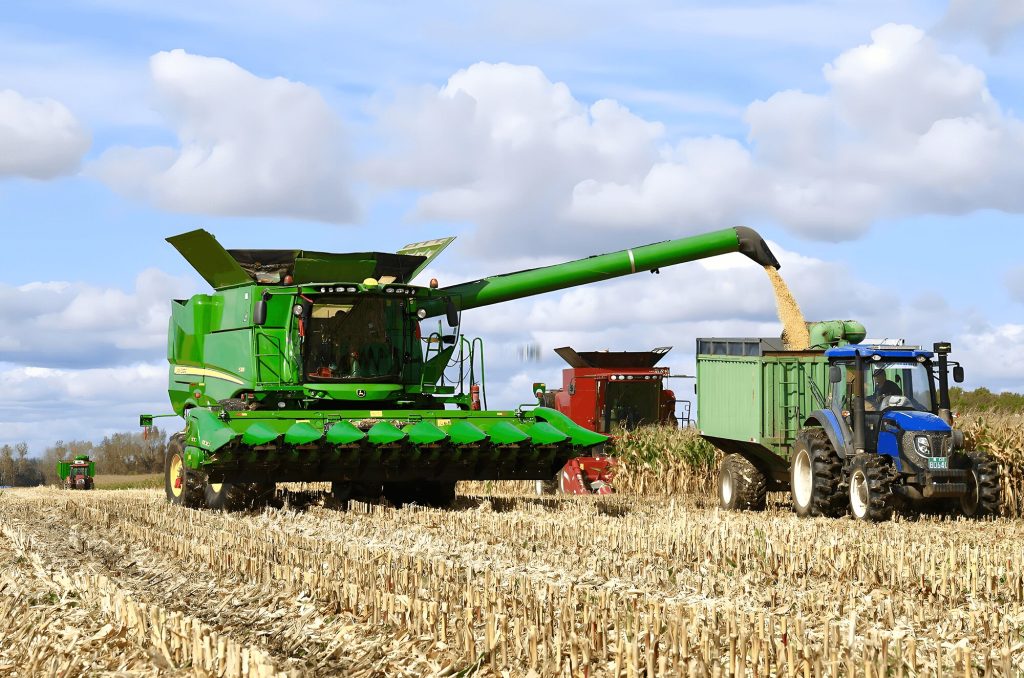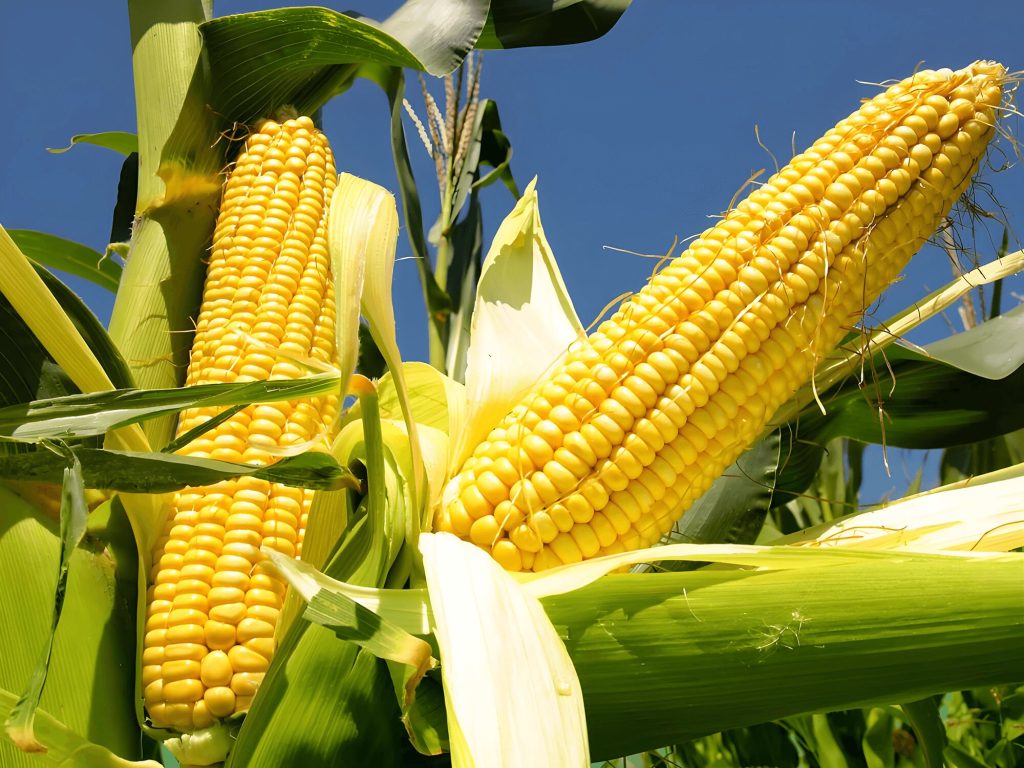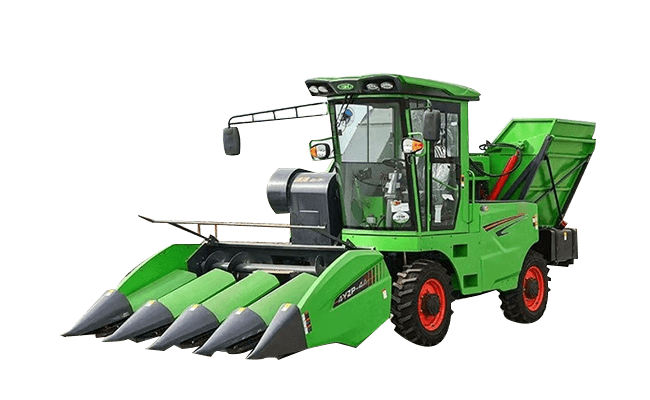As corn planting areas continue to expand, choosing an efficient and durable corn harvester has become a key focus for many farmers. The right harvester not only directly impacts harvesting efficiency and crop loss but also plays a crucial role in the overall economic return of the harvest season. With the right corn harvester, farmers can make the most of a successful season, turning the harvest process into a streamlined, productive task.
Among the many types of corn harvesters, finding the right model influences both operational efficiency and overall harvesting costs. Self-propelled, tractor-mounted, and multifunctional harvesters each bring unique benefits. However, they vary significantly in terms of efficiency, fuel consumption, terrain compatibility, and maintenance costs. Farmers must consider not only the initial purchase or rental price of a machine but also its long-term fuel and upkeep expenses to ensure an optimal return on investment.
This article provides a comprehensive analysis of corn harvester working principles, key features of different models, and their field performance. By gaining deeper insights into these aspects, you’ll be better equipped to choose the ideal harvester for your farm’s needs, enabling efficient and cost-effective corn harvesting.
Contents
- 1 Working Principle of a Corn Harvester
- 2 Main Types of Corn Harvesters
- 3 Advantages of Corn Harvesters
- 4 Performance and Usage Guide
- 4.1 What is the harvesting efficiency of a corn harvester? How many acres can it cover per hour?
- 4.2 How effective is the threshing? Does it leave a lot of impurities?
- 4.3 Does the corn harvester damage the kernels? Is the damage rate high?
- 4.4 Can the harvester operate in wet conditions or after rain?
- 4.5 Can the harvester handle downed corn crops?
- 5 How to Choose a Corn Harvester?
- 6 Cost and Efficiency Considerations: Investing in a Corn Harvester
- 7 Conclusion
Working Principle of a Corn Harvester
A corn harvester performs harvesting, threshing, and cleaning through a series of automated mechanical steps. Its main process includes:
- Ear Picking: The front attachment cuts and grabs the corn stalks, stripping the ears of corn.
- Threshing: The corn ears are then transferred to the threshing unit, where high-speed rotation separates the kernels from the cob.
- Cleaning: The threshed kernels enter the cleaning system, which removes impurities to ensure high-quality harvested corn.
Main Types of Corn Harvesters
Corn harvesters can be categorized into several common types based on their operating method and farm requirements:
- Self-Propelled Corn Harvester: Equipped with an engine, it moves independently, is easy to operate, and is well-suited for medium to large farms.

- Tractor-Mounted Corn Harvester: This type attaches to a tractor to perform the harvesting function, making it a cost-effective option for small to medium-sized farms.
- Multifunctional Combined Harvester: This versatile machine can harvest corn as well as other crops, making it ideal for mixed-crop farms that need a multipurpose solution.
Advantages of Corn Harvesters

Corn harvesters offer significant advantages, providing farmers with an efficient and reliable harvesting solution:
High Efficiency and Labor Savings: Compared to traditional manual harvesting, corn harvesters are several times more efficient, making them ideal for large-scale operations.
High Harvesting Precision: They accurately pick corn ears, reducing the rate of missed crops.
Reduced Losses: Corn harvesters minimize kernel loss and waste, thus increasing the overall yield.
Versatility Corn harvest: Some advanced models support multi-crop harvesting, allowing farmers to flexibly meet different crop harvesting needs.
Which of the machines would be used to harvest corn for wet storage and making silage?
For harvesting corn intended for wet storage and silage, multi-functional combine harvesters are often the preferred choice. Many of these machines are equipped with specialized attachments or settings to chop both corn stalks and ears into smaller pieces—an essential step for silage production, as the chopped material ferments more effectively in wet storage. Their versatility allows them to handle the unique demands of silage harvesting, making them well-suited for this specific use case.
Performance and Usage Guide
When choosing a corn harvester, key performance factors like harvesting efficiency, threshing quality, and adaptability to field conditions are among the top concerns. Here are some essential aspects of corn harvester performance to help you understand its practical use and suitability.
What is the harvesting efficiency of a corn harvester? How many acres can it cover per hour?
The harvesting efficiency of a corn harvester depends primarily on the model, power, and operating conditions. Generally, a large self-propelled corn harvester can cover about 10-20 acres per hour, while a medium-sized tractor-mounted model can handle roughly 5-10 acres per hour. Factors like flat terrain and dense corn plantings also speed up the harvesting process. When selecting a model, consider your farm’s size and the efficiency you aim to achieve.
How effective is the threshing? Does it leave a lot of impurities?

Threshing quality is a crucial indicator of a harvester’s performance. A good corn harvester can efficiently and thoroughly separate kernels from the cob, with a cleaning system that removes impurities to ensure clean, high-quality kernels. High-end models often come equipped with multi-stage cleaning systems that effectively eliminate debris and damaged kernels. If you need high-quality output, look for models with advanced cleaning systems to keep impurity levels low.
Does the corn harvester damage the kernels? Is the damage rate high?
Corn harvesters may cause some kernel damage during harvesting and threshing, but it is essential to keep this damage rate low. High-quality harvesters are designed with optimized ear-picking and threshing systems. By adjusting threshing speed and ear-picking gaps, they reduce impact on the kernels and minimize breakage. When choosing a model, check the manufacturer’s damage rate; quality machines typically have a damage rate of 1% or less, making them ideal for farmers focused on crop quality.
Can the harvester operate in wet conditions or after rain?
Most corn harvesters can work in damp conditions, but operating after rain may pose challenges. Wet stalks and leaves can clog the machine’s feed channel and threshing unit, impacting efficiency. For such conditions, it’s best to choose a model with an anti-clogging design and to clear blades and channels regularly to maintain smooth operation. However, to avoid mechanical wear and potential crop damage, it’s generally best to wait until fields are a bit drier before harvesting.
Can the harvester handle downed corn crops?
Harvesting downed corn crops is often challenging, but high-performance corn harvesters are equipped with special pickup devices to manage downed stalks effectively. Self-propelled harvesters generally offer better pickup capabilities, with adjustable blade angles and heights to reduce missed crops. For severely lodged fields, consider a model with strong pickup and feeding functions to ensure thorough and efficient harvesting.
How to Choose a Corn Harvester?

When selecting a corn harvester, users often consider factors like farm size, equipment performance, and cost-effectiveness.
Which type of corn harvester is best for large farms?
For large farms, choosing the right corn harvester is crucial. In general, large self-propelled corn harvesters are well-suited for extensive operations. With their built-in engines, they can work efficiently and continuously, moving flexibly across varied terrain, ideal for large-scale mechanized harvesting. Additionally, multifunctional combined harvesters are a good choice as they can harvest corn and other crops. This versatility makes them ideal for large farms with mixed crops.
Which is more cost-effective, a self-propelled or tractor-mounted harvester?
Both self-propelled and tractor-mounted harvesters have their pros and cons, so consider budget and intended use:
- Self-Propelled Harvester: This type provides powerful performance, making it suitable for high-intensity, long-duration work. It offers better ease of use, efficiency, and continuous operation, making it ideal for large farms or frequent use. Although initial costs are higher, self-propelled harvesters offer greater long-term value due to their efficiency and adaptability.
- Tractor-Mounted Harvester: This model works well for small to medium-sized farms or users with limited budgets. Operating alongside a tractor, it has lower upfront costs, though it doesn’t match the efficiency or runtime of self-propelled models. It’s a good fit for small-scale operations or farms that grow multiple crops.
What technical parameters should you focus on when choosing a harvester?
The following technical parameters are essential when selecting a corn harvester:
- Power and Fuel Consumption: Higher power increases efficiency but also fuel consumption. It’s best to balance power and fuel efficiency to ensure the machine meets your needs economically.
- Harvesting Width: A wider harvesting width increases coverage per pass, leading to faster harvesting, though it requires higher power, making it more suitable for large farms.
- Threshing Rate and Loss Rate: High threshing rates and low loss rates are key for efficient harvesting, ensuring the kernels are collected intact, minimizing waste, and boosting yield.
- Terrain Suitability: If the farm includes hilly or uneven land, make sure the equipment has sufficient off-road capability or anti-slip tires for stability on rugged terrain.
- Smart Features: High-end harvesters come with smart features such as GPS navigation and automatic obstacle detection. These are ideal for large farms needing precise, automated operations, as they improve ease of use and operational safety.
Cost and Efficiency Considerations: Investing in a Corn Harvester
When assessing the cost and efficiency of a corn harvester, factors like fuel consumption, purchase options, and machine lifespan play crucial roles in the decision-making process. Understanding these elements can help farmers reduce expenses during the harvest season while optimizing efficiency.
What is the fuel consumption of a corn harvester? Are there fuel-efficient models?
The fuel consumption of a corn harvester generally depends on the model, working intensity, and terrain. Typically, large self-propelled harvesters use around 10-20 liters per hour, while smaller tractor-mounted models consume about 5-10 liters per hour. To reduce fuel costs, many modern harvesters include fuel-saving features, like optimized engines and intelligent fuel management systems, which maintain power output while lowering fuel use. For example, Minnuo’s corn harvesters combine efficiency with outstanding fuel economy, providing farmers with effective cost control while meeting their environmental and economic goals. For farmers seeking efficient energy use, this type of machine offers an ideal harvesting experience, balancing costs and productivity during the harvest season.
Which is more cost-effective: buying or renting a harvester?
Both buying and renting offer advantages, so the decision should be based on farm size, usage frequency, and budget:
Purchasing a harvester is suitable for farmers with large-scale farmland who need to harvest every year. Although the initial investment is high, the cost can be amortized over long-term use. Additionally, owning the equipment allows for flexible and immediate operation whenever needed.
Renting a harvester is ideal for small to medium-sized farms or those that only require harvesting during specific seasons. Renting avoids the need for a large upfront investment and eliminates long-term costs such as maintenance and depreciation. For farms with relatively small annual harvesting areas, renting can significantly reduce overall expenses.
How long is the typical lifespan of a corn harvester?
The average lifespan of a corn harvester ranges from 8 to 15 years, depending on equipment quality, maintenance practices, and usage intensity. High-quality models with regular upkeep and careful operation can last longer and maintain strong performance. Additionally, replacing worn parts, cleaning fuel lines and blades, and avoiding extreme working conditions can all enhance the machine’s durability. A long-lasting harvester helps reduce replacement costs, making it a valuable asset for farms with extensive or long-term harvesting needs.
Conclusion

Choosing the right corn harvester—whether for small farms or large operations—can greatly enhance efficiency and lower operational costs. Understanding the machine’s functions, various model types, and operating costs helps you make informed decisions. Minnuo’s range of harvesters, known for reliable performance and fuel efficiency, meets diverse farm requirements and makes the harvesting process more efficient and worry-free. We invite you to consult with Minuo and discover the high-quality results that come with professional agricultural machinery.

